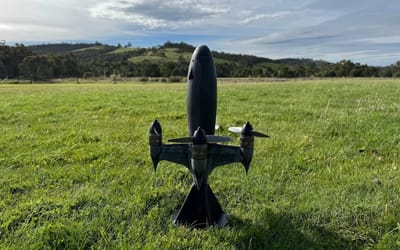European Space Agency is building a hypersonic space plane and aiming for it to be airborne very soon
Published on Jul 25, 2025 at 5:58 PM (UTC+4)
by Ben Thompson
Last updated on Jul 25, 2025 at 8:12 PM (UTC+4)
Edited by
Kate Bain
The European Space Agency is building a hypersonic space plane and aiming for it to be airborne very soon.
The ESA is putting funding towards the Invictus research program, which wants to launch a spacecraft horizontally like a plane.
Such a vehicle would be called a Single Stage to Orbit (SSTO), and several attempts have been made so far, although none have proven successful.
But the agency thinks things will be different this time.
EXPLORE SBX CARS – Supercar auctions starting soon powered by Supercar Blondie
The European Space Agency is building a hypersonic space plane
The European Space Agency might not have the same name recognition as NASA, but it’s still working on some impressive stuff.
It’s developing a space telescope that will look for exoplanets that may potentially contain life.
That’s alongside two satellites that can make solar eclipses on demand, which is pretty extraordinary.

And then there’s this bug-eyed telescope which can spot asteroids before they hit Earth, which we can all agree is a good use of resources.
Back on Earth, the agency is also working on a hypersonic space plane.
This is being done through the Invictus program, headed by Frazer-Nash Consultancy, with the support of Spirit AeroSystems and Cranfield University.
Spaceplanes as an idea have been around for a while now, but they’ve been tricky to master.
Ordinary jet engines need oxygen to burn, which is pulled from the air.
For obvious reasons, there’s not a whole lot of oxygen to use up in space.
Not only that, but the speeds needed to break orbit would normally prove disastrous for the engine – at hypersonic speeds of Mach 5+, the heat of air friction would melt the engine!

So the challenge ahead is to get the air temperature down before it hits the engine, through a process called pre-cooling.
If such a system was installed, traditional jet engines should be able to reach speeds over 15,000 mph.
For perspective, this would be enough to get anywhere in the world in just a few hours.
And heading up into space would be possible, if the engine switched to onboard oxygen tanks.
Should this all come together, ferrying cargo to space and around the Earth gets a lot faster.

When can we expect this project to take off?
The ESA will be injecting the equivalent of $8 million (7 million euros) into the project.
This investment is to see what design the Invictus can deliver within 12 months.
Should nothing workable be presented, the project’s plug will be pulled.
If something does get the go-ahead, the goal is to get this project up in the air by 2031.
DISCOVER SBX CARS: The global premium car auction platform powered by Supercar Blondie




